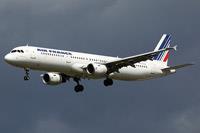Just to clarify my point. I think the conversation went something like:
Evan expressed concern over the lack of CRM training for two relief copilots.
3WE responded by mentioning that even in the absence of formal CRM training, good airmanship, communication and common sense should have allowed the pilots to work something out.
My main point was simply that a crisis of that nature is not the ideal time to hope that level heads will always prevail. Added to that is the fact that the sidesticks don't, as I understand it, give effective visual or tactile feedback in the way that the Boeing control column might, so it wasn't immediately obvious to the other pilot what the PF was doing.
I would also add that while verbal communication is important, it is once again relying on humans, and if they are the same people who are making deer-in-the-headlight responses in their inputs, why would I hope they're going to pull it altogether in their verbal communications?
Did the pilots screw up? Of course, but as Evan says, understanding that doesn't get one very far. Was Airbus to blame? No, but that isn't to say there aren't aspects of the Airbus systems that proved less than advantageous in this situation.
I apologize I don't have the perceptive powers needed to make brilliant black-and-white proclamations like "The pilots f***ed up, what more do you need to know?" I'll leave that to the inscrutable judgment of our esteemed commercial jetliner pilots on this board.
Evan expressed concern over the lack of CRM training for two relief copilots.
3WE responded by mentioning that even in the absence of formal CRM training, good airmanship, communication and common sense should have allowed the pilots to work something out.
My main point was simply that a crisis of that nature is not the ideal time to hope that level heads will always prevail. Added to that is the fact that the sidesticks don't, as I understand it, give effective visual or tactile feedback in the way that the Boeing control column might, so it wasn't immediately obvious to the other pilot what the PF was doing.
I would also add that while verbal communication is important, it is once again relying on humans, and if they are the same people who are making deer-in-the-headlight responses in their inputs, why would I hope they're going to pull it altogether in their verbal communications?
Did the pilots screw up? Of course, but as Evan says, understanding that doesn't get one very far. Was Airbus to blame? No, but that isn't to say there aren't aspects of the Airbus systems that proved less than advantageous in this situation.
I apologize I don't have the perceptive powers needed to make brilliant black-and-white proclamations like "The pilots f***ed up, what more do you need to know?" I'll leave that to the inscrutable judgment of our esteemed commercial jetliner pilots on this board.

Comment